Warwickshire College: Art Foundation, Contextual studies.
Part One, Lecture One
Tom de Freston
Kant vs Hegel- the insolvable equation?
A Lecture in the nature of value in visual culture
This lecture considers some of the following:
Kant
Hegel
Absolute Value
Relative Value
Canons
Vasari’s Lives of the artists
Greenberg’s Modernism.
Formalism
Representation and abstraction
New Art Histories- the decentralised object
Gender studies- visual gender stereotypes, feminist practical interventions
Imperial studies- primitivism, non western approaches to art
Marxism- T. J. Clark and his disciples
The written word is a cousin of the spoken word, part of the linguistic family but with a different upbringing. As such they allow us to present the same content in a slightly different context. The following text is a write up of the first of my lectures for the Art Foundation course at Warwickshire College. For any student who attended the lecture this should hopefully provide a detailed summary of what we covered. Luckily I am able to eradicate the narcissistic background information which filled the first ten minutes of the actual lecture. Unluckily you get subjected to the limitations of my dyslexic writing.
Before I start I make no pretensions to these write up to be proper essays. They will use loose and chatty language, so hopefully keeping some of the tone of a lecture. I shall not be referencing as I would in an essay. This is designed to be a support mechanism and chance to revise past lectures, not as a comprehensive written piece.
The aim of my lectures:
Before delving into specific content I wish to re-outline a few key aspects of what this first series of lectures aims to achieve.
- Expose you to a mass of imagery.
- Introduce you too a wide range of theories and doctrines regarding visual culture.
- Provide you with a range of methods and tools by which to analysis and deconstruct pictures.
The relevance of the above and contextual studies in general, for a developing practitioner, is often questioned. Yet understanding our historical context and the relevance of the past is a critical aspect of establishing any kind of sophistication in our production. It allows us to understand what objects and images mean, and most importantly teaches us how to see. Ignoring this is like trying to read with one eye shut.
Above anything this is going to be a course in looking. Reading is a crucial feature of our research, but if there is to be a hierarchy then it comes below looking. I still find it ironic that many practitioners will happily spend hours reading whole books on a work of art yet seem to never spend more than a couple of minutes looking at one. There is an imbalance that needs addressing.
This chronic lack of visual attention seems to have been exacerbated by contemporary society. We have become sophisticated consumers of sight; able to devour adverts, signs and imagery in an instant. It is part of a wider acceleration of living pace in Western society. As we have ‘progressed’ we seem to be living life quite literally in the fast lane. Broadband, transport, mobiles and digital television provide a technological microcosm of a social macrocosm.
The transient nature of our environment is not something I am criticising, merely a fact. Yet surely it is worth sometimes interrupting the constant flow of traffic and devoting time to something. I would encourage an active effort to spend longer looking, to learn to see. Give an image time to grow on you, understand the dynamics of vision, and allow the sensation of sight to reveal itself to you. This is not a dreamy eyes romantic notion but about engaging the mind and senses actively. Ten minutes looking at a work of art is worth a few hours reading about it. It is a fundamental part of our development as makers.
Diatribe over, lecture to begin…
Kant vs Hegel- the insolvable equation?
A Lecture on the nature of value in visual culture
The purpose of this lecture is to explore how we value visual culture and the methods by which we formulate these judgements.
When we mention value we should not be confusing it with cost. Cost is an inherently measurable quality. There are clear and logical economical systems by which we can calculate this. If we go into an auction house we are made aware that an objects market value is constructed by a systematic nine point system. Capitalism demands tangible, measurable value.
True value is less tangible and more elusive. It is inherently complex and demands an ontological dispute. That means we have to question an objects very nature of meaning to capture its worth.
This brings us to Kant and Hegel. Who are they? Both are German philosophers who lived during the late 18th and early 19th Century. This was a time in which scientific progress and the development of knowledge and thought made people question the previous hegemony of religious doctrine. Notions such as a singular God or any God at all were challenged. This provided the environment for thinkers like Kant and Hegel to pursue metaphysical enquiries. Metaphysics is the search for that which underlies us all. The conclusions which they came too were virtually in total opposition. Before continuing it should be noted that both these figures research is far more complex and faceted than the crude simplifications and generalisations made in this essay.
Kant’s philosophy places the rational, active human subject at the centre of the cognitive and moral worlds. It is the basis of most existential thought. Logic, he argues, states that we cannot know anything outside of ourselves.
The relevance of such thought for art lies in the notion of ‘the thing in itself’ and that no meaning exists outside of this. It means we see visual culture as having absolute value and intrinsic worth. It proposes that art has or should have total autonomy, not to be determined by any exterior associations but entirely by its aesthetic. He also develops a clear notion of what we understand by beauty and aesthetics.
Hegel’s philosophy can be seen to propose an alternative polemic. Hegel is no more or less complex than Kant, but is far harder to simplify and, therefore, to grasp on a basic level. I shall attempt to articulate what I understand of his relevant thought.
Hegel spoke about the ‘zeitgeist’, which loosely translates as the ‘spirit of the age’. It is a God like all encompassing power, the ethereal, intangible essence which underlies us all. He believed that as we move through space and time the zeitgeist evolves into a continuously more developed form. Hegel proposed that there is a continual dialectical relationship between the unseen spirit and the corporeal world. Thus every object, of a particular time and place, becomes a physical embodiment of the underlying spirit of the age.
By default this means that any notion of absolute value is dismissed. Instead it is argued that there is no such thing as intrinsic worth, rather that everything is relative. For everything is defined and formed by its geographic and historical context. It is not good or bad, just merely is. It proposes that an object’s only value is by association, in the manner in which is provides us with a coded doorway to the zeitgeist.
These two opposing polemics provide the foundations for various approaches to visual culture and history. Removed from their specific philosophical context we can simplify the standpoints to two clear terms.
There are those in believe in the Kantian notion of absolute value. The belief in permanent sets and ideals by which we measure and value art.
Alternatively some follow what could be called a Hegelian path, arguing for relative value. They propose that an object or image is not good or bad, but merely an embodiment of the social, political, philosophical conditions of its creation.
I want to spend the first half of this essay tackling a couple of areas in which the idea of absolute value manifests itself. The later half will look to question this approach and consider a range of methods which espouse relative values. I shall conclude by seeing if the two need to be in opposition.
Absolute Value
Canons
I wish to consider how absolute values are those which underlie the formation and perpetuation of canonical artists. An artistic canon is a body of work and associated ideals which have survived through time and are held in the highest esteem. The artists who make up a canon are those who have survived the test of time, the ‘master’ so to speak.
As a notion is presumes that there are universal and absolute values by which art is judged. Canonical works of art either represent the purest incarnation of these predetermined rules or are celebrated as having contributing towards this high point.
I shall focus on two examples which demonstrate how canons are formed and survive.
Giorgio Vasari
Vasari is often described as the father of Art History. He was a painter, teacher, designer, architect and writer in 16th Century Italy. The ideals he espouses in written form underpin those by which canonical artists have been measured and judged. These are the basis for the common conception of the renaissance, the rebirth of classical values of representation in art throughout Europe; most notably Italy, from the 13th to 16th Century.
These values are articulated in his seminal and crucial text, the Lives of the Artists. It is a three part account, in a biographical format, of the artists who lived in this period. He argues convincingly that there are clear and logical values by which to measure art. Beyond this he sees a linear progression in the development and height of these principles. The three stages of the book show a chronological evolution from rude beginnings to an ultimate high in 16th Century Central Italy. In the first section we come across artists such as Giotto and Cimabue, in the second della Francesco, Massacio and Mantegna. The third section contains those Vasari feels have reached the ultimate peak, Leonardo, Raphael and Michelangelo.
These absolute values can be summarised as the factors which are used to construct a figurative representational work of art (in regards to painting and sculpture at least).
Truth to nature- mimesis
The ability for the artist to construct a convincing illusion of nature is seen as the central facet of good art by Vasari. He sees design (‘desegno’) as the key to this development. Every work should be built on the foundations of a solid and accurate linear design. This is honed by the artist’s development and awareness of human proportions and observational drawing.
It finds a more specific incarnation in portraiture. As a genre which necessitates likeness it is a clear measure of the development of representational skills. If we compare a portrait by Giotto, to one by Mantegna to one by Raphael then we can sees it progression through the stages of his book. Vasari’s argument becomes convincing. From stilted and simplified to a proto photographic figure which seems like a real individual capable of breathing and moving. The increasing sense of personality over reductive idealisation reaches it peak in the 16th Century. Raphael and Titian perhaps represent the high point, whilst Bellini’s famous Doge portrait, in the National Gallery (London) is another wonderful example (his pedantic attention to detail reminds me of a top end digital camera).
WILL INSERT IMAGES LATER
Window onto a world
A painting is a two dimensional plane. The increasing understanding of geometry and perspectives allowed artists to develop its ability to present itself as a window onto another imaginary world. Albertti’s Della Pictura is a crucial text in this field but the evolution is certainly more fragmented than many commentators suggest.
Liens of perspective create a sense of depth. The suggested three dimensional space becomes a stage onto which figures can be placed. Vasari argues that artist’s ability to both create this space and position figures within it progressed naturally. Look to Giotto’s ‘Marriage of the Virgin’ 1305, Massacio’s ‘Tribute Money’ 1424 and Raphael’s ‘Entombment’ 1508. In the first figures are heavily outlined and seen in profile. They seem to almost exist in independent space, not convincingly interacting. They exist on one plane in static poses. In Masaccio’s work poses and drapery are livelier. Figures seem to be set in rather than in front of the constructed space. In Raphael’s work the figures exist in a fluid space, rather than being set into clearly defined planes. The move dynamically throughout the width and depth of the stage and interact convincingly with one and other.
WILL INSERT IMAGES LATER
Selection of the best parts of nature
The notion that an artist can select the best parts of nature is not unique to Vasari. Pliny, in his encyclopaedic account of classical civilisation, spoke about a similar notion. He accounts the story of Zeuxis, who got all the most beautiful women together so he could select their best parts. Vasari elaborates to suggest that in the selction of natures strongest points the artist is capable of transcending the limits of nature and the creations of God. In suggesting this he implies the logical end to the artists rise from mere craftsman to demi-god.
Vasari states that art is to be judged by the artist’s ability to fulfil these criteria. It means that art has a clear set of rules by which value can be measured. Vasari makes it clear that Michelangelo represents the purest incarnation of these rules. Everyone else is valued almost entirely by the manner in which they helped art reach this point. We should not ignore the fact that Vasari is too Michelangleo what Saatchi is to Hirst, his chief apologist. He has direct and indirect personal interest in Michelangelo being celebrated.
If we look to Michelangelo’s Last Judgement (Sistine Chapel, 1508-12) we can see what Vasari meant. Each form being an almost superhuman, proto steroid munching muscle machine. They climb up and over the vast all consuming wall. Within the theatre what we see is almost a grammar of vision. Every part contributes to the awe inspiring, ‘terribiliata’ of the whole. The term sensation, when applied to the YBA’s seems to pale into insignificance against this visual description of the sublime. It is no wonder people felt the very presence of God in this space, you cannot fail to be overwhelmed.
WILL INSERT IMAGES LATER
Consider each independent line. Its value is measured by its ability to accurately describe a particular form, a leg moving through space; as a letter is valued by its contribution to a word. That leg is the valued by the part it plays in the total display of that form. That form is judged by how convincingly it is set in space and interacts within a group of surrounding figures. Like a word in a sentence. That group is thus judged by its dynamic movement in space and its contribution towards the whole, as a sentence is too a paragraph. The ability for this combination of parts to accurately convey the particular subject matter is the final judgement of quality. Just as we judge an essay by the ability of the various parts to articulate a story or argument.
What we are left with is a set of absolute rules. Everything is measurable by these strict guidelines, regardless of time or place. The specifics of its creation are ignored for a continuous set of values. Much literature on representational art, even today, basis itself on these values, they are the corner stones of connoisseurship.
For now we shall leave Vasari, before later returning to consider the validity of such absolute values.
The Modernist Canon
The above mentioned values make the presumption that the artist should be manipulating his materials to disguise themselves as some other form, be it a landscape, a person or a building, in order to depict some grand narrative. The arrival of photography, along with more subtle factors, caused artists working in other mediums to move away from pure representation. As a result a new set of values needed to be formed.
I shall call this the ‘Modernist Canon’. Before elaborating I would like to make a few points about labels and their limitations. On a wider note this is an off tangent diatribe against jargon, which tends to demonstrate a lack of awareness rather than some cultured use of language. The term modernism is a perfect example.
A tangent on terminology…
Modern- try not to use this word to suggest contemporary. It tends loosely to refer to a historical period which, depending on who you speak to, starts somewhere in the 19th Century and ends in the later middle section of the 20th Century. It does not mean art made now, the accurate term for that is contemporary. Even in this historical context the word modern is pretty crap. Far better to use less subjective terms such as dates. It is true that Manet painted ‘Olympia’ in 1863. It is a matter of opinion if the work or this period can be classified as modern.
Modernism/modernism- This word is has almost entirely opposing cultural references depending on context, and to a degree capitalisation. Modernism with a capital M tends to refer to Greenberg’s notion of what Modern art is. We shall be focusing on that in this section. For the sake of this illustrated point it is sufficed to say it is a doctrine which claims art should dissociate it-self entirely form its surroundings. I shall elaborate later.
The other common use of the word modernism is in the Baudellairian sense. Baudellaire is a 19th Century poet and thinker of great energy. Outside of his poetry he wrote extensively and brilliantly on the arts. His article, ‘The Heroism of Modern Life’ is one of the great artistic calls to arms in western history. He demands that painters no longer focus their attention on stories of vice and virtue from the bible, the classics and modern literature. Instead he points out that contemporary life itself should be the artist’s source of subject matter. The bustle of the rising metropolis, train stations, prostitutes, markets, bars and parks. It is a demand for artists to focus their attention on their surroundings. To Greenberg’s closed door it is an open window.
NB As a side point the democratisation of subject matter could be said to be a step towards Greenberg’s total self reflection, as part of a wider move towards internal meaning. We shall tackle that in depth in a later lecture.
The point I am making here is how the same word can mean entirely different things depending on the context. So rather than using such words we should look to describe more clearly what we mean. We might think saying Carravagio is a Baroque artist shows of our knowledge of his stylistic attributes. Instead it shows our attachment to what is an artificial historical construct. These phrases are made by historians to simplify and categorise things. It limits what we see. We would be better to discuss the exact theatricality of Carravagio’s use of lights and darks, the staging of his figures, the drama and exaggeration of the poses. The very attributes we think about when we use a term Baroque, but without the falsity of the baggage. Jargon is lazy and often empty.
Back to Greenberg…
Wake up at the back! We are back onto the main thread of the lecture now.
Greenberg was a mid 20th Century American art critic. I often see Greenberg as the mirror to Vasari. Like his eminent predecessor he articulated a clear progression from one point to another. He looked back to the nineteenth century and saw a state of affairs that demanded art refocus on its independent properties. No longer should it be reliant on supposedly superior art forms like literature. It had to work out would was exclusively its own and focus attention there. The properties he says as independent to painting, for example, are the fact that it involves the spreading of a colour medium on a two dimensional support. The use of paint to pose as something else, or the denial of the flatness for an imagined three dimensional space was dangerous. Its truths should be, he suggested, celebrated, not denied.
Greenberg painted a picture (sorry, could not resist the pun) of a clear rise towards these values. He saw it as starting with Manet, progressing through Cubism and reaching its peak in Pollock and post painterly painting. Pollock is Greenberg’s Michelangelo; the artist whose work encapsulates the purest incarnation of his self reflexive ideals.
In these artists he saw a clear move towards the destruction of image and subject matter; lose of depth and a move towards the surface, the display of the painting as an object and the materiality of the paint being celebrated.
He locates the evolution in the work of artists such as Manet, the Cubism of Picasso and Braque, Abstract Expressionism; in particular Jackon Pollock and eventually it finds its conclusion in the post painterly abstraction of people like Kenneth Noland. This chronology of artists does seem to fit in with his arguments.
WILL INSERT IMAGES LATER
Manet’s ‘Olympia’ of 1863 seems to break from previous models of representation. The lack of sculptural modelling in the figure gives her an air of stark unreality. Courbet was not alone amongst Salon goers in being shocked at her flatness. Half tones had been replaced by a series of sharp lights and darks (surely spawned by his appreciation of a Spanish painterly tradition and Japanese prints) Space and depth are surpassed and the figure seems to consciously sit on and across the two dimensions of the picture plane. In the high Analytical period of Picasso and Braque (1909-11) we see them push objects and form to the point of destruction. Figures are subjected to the faceted of an intrigued network of horizontals, verticals and diagonals. The celebration, we are told, is of formal values over specific image. The lines certainly remembered the frame and thus the two dimensions of the canvas. The objecthood of the painting is celebrated. In Pollock’s celebrated drip paintings we see what appears to be a total lose of subject matter. Gone is the need to rely or imbedded painting in looking like something else. This is paint for its own sake. Drips cover the expanse to create a homogenous whole. The pulsing lines take us over and around the surface in a hypnotic dance, the rhythm of the interlocking lines makes us intimately aware of both the material and the flatness of the painting. By the time we get to Noland even the slight hints towards nature in Pollock have given way to purity of form. The choice of a square is designed to limit any depth. The antithesis of representation is presented in spatial terms. Gone is the attempt to reach beyond the surface with perspective and geometry. This is the completion of a returned journey. The circles echo the frame and colours interact to limit rather than create depth. The work is what it is, it seems to speak of nothing outside of its formal content of colour, line, surface and tone.
Seen in this history, in this context these artists show a move towards a solipsistic closed door on association, art for arts sake. It is a neo platonic ideology.
NB: Neo platonic
In his book ‘The Republic’ Plato condemns the mimetic/representational value of art. The book is written in the format of a discussion between two people, which is highly persuasive. He says the purest form of any object is its conception; the idea of a table for instance is the true table. Once a table is made by a craftsman we are one step removed from its purest truth. It is a copy of its purest form. It is justified as it is functional. When the artist paints that table it becomes a copy of a copy; a lie which has no function other than to lie and please the eye. Plato thus dismisses art.
Greenberg is thus arguing for an art which chases a purer truth. Rather than being a copy of copy an art which tries to get as close to its purest reality as possible; art which does not disguise itself as something else but which presents its materiality back to us.
In place of Vasari’s values a new set of absolutes are formed.
WILL INSERT IMAGES LATER
Paint for its own. sake. In a work by Carravagio paint is celebrated for its ability to disguise itself as form, as some other surface or texture; to be an actor in a play so too speak. In an abstract painting, according to Greenberg, paint speaks about nothing outside of itself. We celebrate its intrinsic formal values; the play of colours against colours, surface, tone and texture. It is a pure aesthetic delight.
Line for its own sake. In the work on the left line is used to describe form. We understand and read it as part of this description, it supposedly has not autonomy. In one of Pollock’s drip paintings line is about line itself. Its decoration across the surface, its rhythm and dynamism celebrated. It needs not describe anything. It has be detached from its representational referent.
Flatness over depth. In the work by Raphael figural proportion and perspective are sued to generate a sense of depth. In Nolands work the frame is referenced by the circular forms, so to remind us of its object hood. Colour and material sit clear on the surface, so denying the illusion of depth and confirming the truth of the paintings two dimensionality.
What Greenberg claims art is focusing on are truly Kantian absolute values. A door shut and bolted on any external association, objects which describe or comment on nothing outside of themselves. It is about what is inside the frame, literally, and nothing else. He argues art is free from previous constrains and has total autonomy.
Such purist and formal views are still prevalent, in theory at least, in many artists today. Ian Davenport, Gary Hume, Callum Innes and Howard Hodgkin are all artists who on the surface appear to continue a celebration of formal qualities. The later of these artists points to the falsity which we shall explore in the second half of this lecture. Whilst association is more elusive it is and always will be there. There is no such thing as absolute value or total lack of exterior reference.
Artificial Histories
The falsity suggest above is what I want to consider, briefly, before progressing onto the ‘Hegellian’ half of our lecture. The doctrine of Vasari and Greenberg has underpinned some of the fundamental Canonical values with which we measure representational and non representational art. Like all literature on a subject with a clear and coherent standpoint we should approach it with interest and cynicism. History is an artificial notion; it is something mankind has invented in order to make sense of the half alive chaos of the past. We construct systems in which we can group and order our past to make sense of it all. This is a necessary and crucial act, but one which is by its nature always a step removed from reality. Real time goes from A to B whilst a historian tries to recreate this route looking back, at best, from B to A.
Both Greenberg and Vasari are inherently biased, in their construction of particular histories, due to their historic and geographic location and allegiances. Vasari was a 16th century Central Italian who was Michelangelo’s chief apologist. Greenberg was an art critic in mid 20th Century America and was one of Pollock’s biggest supporters. Both present the past as something which leads up to a peak in the artwork of the respective heroes, this is no coincidence.
I shall pick two, out of many, case in points to show how they project their ideals onto the artists which precede these ‘peaks’ and so misunderstand their ‘intentions.’
Della Francesco’s Baptism of Christ
vs
Michelangelo’s ‘Last Judgement- Sistine Chapel’
WILL INSERT IMAGES LATER
Vasari only credits Della Francesco for his contribution towards the development of perspective and geometry. The only value he credits his with is relative, for his part in the evolution towards Michelgelo’s peak. If judging him by the eternal absolute values which the Last Judgement displays then he supposedly falls short; lacking the drama and the dynamic excess of movement through space. Yet is this what he was attempting to achieve? We need to look towards subject matter.
The last judgement is a moment of epic drama. So the language Michelangelo uses is highly appropriate. The serpentine spread of individual and collective forms up and across the canvas in a swirling energy captures the melodrama of the moment perfectly. Form and style unite perfectly with subject.
Della Francesco’s Baptism of Christ is a picture of entirely different subject matter. This is a story and scenes of quiet pray, equally as holy but necessarily understand and calm. Everything the artist does supports this. The energy and dynamism of Michelangelo would be misplaced here. Geometry is consciously used to restrict rather than create movement. The curve of the arch is continued within the frame to act as a stabilising of the composition. The dove sits in the centre of the imaginary circle thus created. Christ stands central and the work as a whole has a symmetry. All these devices purposefully limit movement, inducing a calm, solid and eternal spirituality. With a very different language to Michelangelo but with equal sophistication Della Francesco unites form and style to subject matter.
Cubism and abstraction- another lie
WILL INSERT IMAGES LATER
As previously described, Greenberg puts forward the notion that Cubism is part of a clear and inextricable move to abstraction. Alfred Barr (first director of MOMA) constructed a famous diagram which supports this notion. Cubism is one of many ‘movements’ which is shown to fit into a clear and systematically rise to abstraction. Formalists argued that Analytical Cubism only just held back from pure abstraction because they still felt that art had to in some way be derived from and connect back to a particular image or form.
I would argue that the work of Picasso and Braque around 1911, whilst aesthetically close to abstraction is not in any way concerned with abstraction. In fact it does quite the opposite. From 1907-1914 Picasso and Braque explored and developed new ways to represent image and form. In the analytical period they moved from the faceting of a forms surface to the breaking of the closed form. From here a figure or still life could be subject to a punish abstraction by a matrix of lines. At its height their analytical work only just holds onto its attachment to an image. We can only just make out a figure and its action amongst the mass of lines which decorate the surface. The crucial fact is we still can. At this point they were hanging over the edge, capable of descending into the abyss of abstraction without a tiny push. Crucially they changed direction. They turned to collage and what would be known as the synthetic period. The construction of an image from abstract elements rather than the destruction of an image towards abstract elements. What this reveals is that they are not interested in abstraction but in the power of representation. They are interested in stretching the power of the image to breaking point, to show how little we need to recognise a particular image. To ignore this visual fact and place them as part of a rise to abstraction is foolish and misinformed.
Museums
At this stage I was going to look into Museums and how they control meaning and perpetuate false narratives. I did not have time to cover this in the lecture, however, so will miss it out here. I feel it is a significant enough area of research to perhaps dedicate a whole (or perhaps half) lecture two later in the year. The Louvre and the Moma are two particular prisons of meaning I would like to look at.
Whilst, as shown above, doubts were raised about the narratives; we had to wait a while until any alternative vision of the past was offered. Before considering these new approaches it is worth summarising the first half of the lecture.
We have looked at how Canonical values support Kantian notions of aesthetic judgment. They provide sets of absolute rules by which we can measure art. As such there is good and bad art and History seems to have its highs and lows. We are able to judge the work of art in purely visual and formal terms. In this system the connoisseur rules, making opinions and value judgements on what can be seen alone.
A Hegelian Approach to value.
Locating a particular moment in which society changed its approach is precarious and simplistic. It can certainly be stated, however, that a series of critical events throughout the 1960’s provided the foundations for a sector of society to re-evaluate the way it was both constructed and operates. This is not a lecture in history, so the need to go into any depth on the specifics of these events is limited. Needless to say, however, that Western approaches to gender, race and class were challenged more thoroughly than ever before, due to the weight of actual political and social action. The call for change had come out of the library and lecture halls and into the streets, quite literally.
What was seen was a society who’s who system and beliefs were constructed on false, myopic and bankrupt notions. The paradigm, which had survived untouched, was in need of a seismic shift. Whether that shift has or will ever happen is a question of social and political scholars. In this instance all we are concerned about is the new field of inquiry it opened up in the field of visual culture.
The greatest impact has been in the manner in which are is judged. For these new scholars no longer is it central and it is anything but absolute, autonomous and free of association to the world outside its ‘frame’. Art was now judged in relative terms, in how it came from, comments on and relates to other doctrines. Gender studies, sociological thought and ethnic studies all began to ask new probing questions. Art was a tool for these other disciplines and its value was judged by what it tells us about them.
Feminism/Gender Studies
Most people today have little time for feminism. This is perhaps why many people who come from that discipline prefer the term gender studies. Feminism has got to much baggage, people have a naïve image of it in there head so dismiss it unfairly. The change of name might initially appear to be nothing more than pussy footing political correctness. In this instance, however, it is necessary as it provides a more neutral entrance to a vital area of enquiry.
Whatever preconceptions we have about gender studies tend to be unfair. It is a complex, diverse and faceted field of research. It is without incredibly worthwhile and more importantly relevant. For every piece of related literature which says one thing there is a dissenting voice coming from another angle. So to dismiss it and its contributors as a singular and tired voice is ludicrous. There still exist bizarre and troubling gender perceptions within our society; from the ideological to the more tangible effects on the everyday.
As previous stated, however, this is not a lecture in social science, gender studies, philosophy or any other similar doctrine. So rather than focus on the literature I want to see the kinds of questions it has raised and interventions it has made to visual culture itself. I want to take specific case studies and focus our attention on those works, but with the enquiry being directed by questions of gender.
Gender and form
“The Florentine ideal of beauty has found its exemplary expression in statues of proudly erect David’s, the Venetian in paintings of recumbent Venuses”
Panofsky’s statement about the differences between Venetian and Florentine Renaissance art are in many ways simplistic and open to discussion but they point to an interesting notion. Florentine art, the Vasarian ideal, was equated with design, with plastic firmness and drawn line and on a more general level with being explicably masculine. Veneitian art on the contrary is put forward as being about the act of painting (colorito, the verb to colour, not colour itself) about the sensuous and beautiful, in simple terms the female. It is interesting to see that critics aligned form and style with a specific gender. The artists seemingly did as well, with those drawn to a certain aesthetic seeming to also focus on the related gender.
If we compare Michelangelo’s ‘David’ to Titian’s ‘Venus of Urbino’ then we see the ultimate incarnation and evidence of Panofskys argument. Whilst the statement make generalisations about artists it is certainly accurate in its revelations about certain formal attachments society has given to male and female types.
WILL INSERT IMAGES LATER
Look around the National gallery and see how many of the women are both nude and reclining. The submissive horizontal line, echoing landscape and nature; calm and accepting and seemingly focused on beauty over action.
In comparison look to Michelangelo’s David, a classic male type in art. Like most he is erect, phallic, powerful, vertical and celebrating some athletic and muscular victory over evil.
The types exist, like it or not. To an even greater degree the vertical as a symbol seems to be exclusively male and the horizontal female. Look to any city at the iconic buildings, normally tall and erect, displaying their verticality. Generally they celebrate the power and dominance of a patriarchal society. The type which is described by Panofsky has survived through time in many forms.
In response we need to question the very modes by which society has come to attach certain ideals, and visuals, to each of the sexes. Is this correct? Should this survive? Should this be challenged and subverted? Is it, as Freud would perhaps suggest, a part of our psychosexual make up?
The role of women in art
Linda Nochlin was one of the first people to realise a mammoth imbalance in the role of women in art. She noticed that women, generally nude, seemed to fill most of the canvases in our historical galleries. Conversely, however, almost all the pictures were made by man not women. In art history the man has been privileged with the label of master and genius and the woman merely allowed to be subjected to the gaze of said genius. Such pictures even seem exclusively made for a male spectator.
Before Nochlin, however, artists like Manet were starting to create work which questioned the role of the female inside the canvas. We shall look at an example of this in his ‘Olympia’ 1863. Remember that this is the same work Greenberg talked about in entirely formal terms. His discussion revolved around its flatness and its contribution towards the rise of abstraction. Its subject matter and content, the role of the female, were not questions he asked; a gender study does. In looking at the same work from these two standpoints we can appreciate how doctrines which celebrate absolute value and those which celebrate relative value approach and discover very different things about a visual.
WILL INSERT IMAGES LATER
A few years before painting ‘Olympia’ (1863) Manet did a copy of Titian’s ‘Venus of Urbino’ (1538). If we needed any more conclusive proof that the later work explicitly quotes the former than this is it. Quotations in art are not rare, and often they don’t mean anything. An artist may borrow a pose of a figure because he sees the potential in it for some other end, outside of its original context. In this instance its original use does not matter, as it is not making any kind of commentary or opening up any discussion with its source. It would not matter if it came from a newspaper of a masterpiece. In ‘Olympia’ its relation to ‘Venus of Urbino’ is so clear that a comparison of the two is crucial to a discovery of what Manet was challenging.
Compare the two nudes poses and faces. From a submissive come to bed dreamy hazy eyed glance to a confrontational, aggressive glare. From a reclining, smooth, welcoming, flowing, beautiful awaiting nude to an upright, flat, stark and self confident pose. From a women ready and willing to welcome the man to one who is self assured and in control.
What about the sleeping dog as compared to the wide awake cat. Think ichnographically. What does the cute little dog suggest? Loyalty? That the person who has arrived is not a stranger? If so then what about the cat? Fear? Aggression for the visitor? Even a possible sexual dimension. Manet was fully aware of the visual pun, which does not get lost in translation, between a pussy and female genitally.
What the comparison suggests is a very different relationship between the figure and the implied visitor/spectator in front of the bed/canvas. For Titian it seems to be a relationship between two consenting individuals who know and are familiar. A goddess and a mortal in a utopian world, a husband and wife? Whatever the case, this seems to be a scene of love and beauty. For Manet the suggestion is of a sexual encounter between strangers. The servant presenting a gift which seems to support a prostitute client relationship.
What about he hands. In Titian’s work she seems to be masturbating, so submissive as to be preparing for the arrival of the man. Manet women, instead, presents a blocked door too desire.
What this tells us about changing roles of women in art is pretty clear. Suddenly hey have more freedom, more authority. Still subjected to live inside the frame, but no longer the sleep and suppliant recipient in singular terms. They have a certain, if peculiar, amount of independence.
If interested in a wider discussion of this painting in this sense go to T. J. Clarke. He has written about fifty very good pages on it.
Flesh and Paint
I shall not dwell on this area of the lecture, as we will be having a series of talks later in the year on the materiality and meaning of paint itself. If you remember I made the link between a history of painterly painters and there general tendency to paint and delight in the female flesh. Da kooning stated that flesh is the reason oil paint was invented. When we look from Titian, to Rubens, to Velasquez, Delacroix, Manet, Freud, Saville and beyond the argument is persuasive.
For each of these artists a correlation and joint delight seems to be had in paint itself and flesh itself. The way paint can be pulled and stretched over a surface akin to the way we might take a sensuous delight in flesh and skin. The very visceral, malleable properties of both has a seductive and sexual quality which seems to unite them.
As I say, I shall expand upon the relevance of such a thought in later lectures.
The returned Gaze
Picasso’s ‘Les Demoiselles d’Avignon’ 1907
vs
Inges ‘Turkish Bath’ 1860’s
WILL INSERT IMAGES LATER
The comparison between these two works is between types, rather than specifics. Ingres’ Turkish bath represents a type which was consistent in most art prior to the 20th century. A group of nude bathing women who we, as the spectator, can look in on. WE look as voyeurs, secretly, with them unaware of our gaze and unable to return it. The relationship is hierarchical and one dimensional.
Picasso violently challenges this. All five of his nude women confront us with aggression. The figure on the right has her back to us but also looks out at us. It’s as if her head has been ripped of its axis and turned around 180 degrees to face us; a violent act to disturb and remind us of the confrontation. The returned gaze is given extra edge but the way we no longer have sinuous curving lines but sharp geometric edges slicing through the picture plane. There is also no place to hide, to horizon to disappear of into. One point perspective gives way to a shallow picture plane which assaults our eyes from every angle. No longer sensuous naturalistic colour, instead bold clashes of pinks and blues. From beauty to brutality.
All of which makes a mockery of the mass of early literature on this work. The rise of formalist thought (so the kind of thing we looked at in the first half of the lecture with Greenberg) created an environment where this work was disguised in purely formal terms. It deconstruction and attack on previous ways of seeing, its use of line and colour. It contribution to Cubism and hence abstraction. All the formal observations are valid and true, but there is a function to the formal and style, it is not the pictures meaning or value. The style gives the subject matter its edge, its attack, its brutality. This subject matter cannot be ignored. Five whores looking out at us and confronting us. Our privileged detached positioned destroyed. A phallic like table piercing the divide of the bottom horizontal. The line which separates is now pierced by a bridge which unites and unsettles. The way in which said table pierces a collection of fruit merely emphasizes the sexual nature of the piece. All of these questions are central to the works discussion, yet were ignored for so long.
This painting is not a closed door. It is not autonomous. It cannot just be judge on its aesthetic and on its formal content. We need to make connections, association, to see how these internal things relate to external less tangible and invisible notions. We need to remarry form to content.
Art and centre fold
Much of the discussion to this point has shown up the value systems of the female body in Western art. A natural continuation of this idea sees many of these supposed masterpieces as nothing more than centre folds disguised as high art. A soft core pornography veiled in craft for the titillation of rich and monarchical patrons. Titian’s poesie, and particular his Danae (painted for Phillip II of Spain in the 1550’s) is a classic example of a work that has been cast of as a centre fold of sorts. I shall focus some attention on it too hopefully show how an approach which dismisses this and similar works as pornography is limited and false.
One of two poles of extremism is a reading which sees the work as singularly erotic. This reductive analysis sees the display of female flesh, and its seductive effect, as the end of interpretation. Documentation of letters sent between Phillip and Titian, discussing the desire to see females form multiple angles, is used by Hope to argue for an interpretation of the series as one of soft core pornography hidden under the veil of high art methods.
The Danae painting sent to Phillip before 1554, most likely the Danae with Nurse in the Prado, is generally considered to be one of the most frankly erotic of all Titians paintings. The marginally less erotic Farensse Danae was described, by a contemporary, as making the Venus of Urbino look like a Thetian Nun in comparison.
The painting is certainly highly erotic:
The sulphurous flesh, shimmering and vibrating. The suggestively spread legs, the painting hand on the inner thigh to ease Jove’s entry, the desire filled gaze, the use of light as a metaphor for both Jove’s arrival and a celestial orgasm,
the thematic contrapposto between the nurses old age and Danae’s naked beauty. All elements which stir the sense of the viewer just as they had those of Jove.
Eroticism and pornography are two very different things, however. Pornography is surely always singularly erotic. A pornographic image will never reach beyond this base animalistic level. Surely eroticism can be involved but merely be the start of interpretation.
In Danae the eroticism seems to be what starts both the internal and external involvement. The eroticism is what draws us into Dane’s realm, just as it had drawn in Jove. It is the device which is central to the narrative plot and also to our emotive involvement in the plot. Rather than objective distance the eroticism pulls us in, collapses the gap between the painted and real realm and allows us to be intimately involved in the dynamics of the dramatic moment.
A reading which search for pornography seems myopically reductive. In another strand of research there are those who search for high minded allegorical readings. They see the work as containing and pointing towards deep moral codes. This seems an expansive reading too far, the projection of intellectual reason onto the work. One seems to look at too superficial a level, the other to think at too high a level. Rather than pornography and philosophy is there not a phrase to cover both ends of the interpretive spectrum; ‘poetry.’ In light of the fact Titian called this work (and the series of which it was a part) ‘poesie’ (painted poetry as such) this suggestion seems plausible. For poetry is the art form which can take in all elements of life, from the erotic to the intellectual without contradiction. To limit a reading to one or the other is to miss the subtlety and depth of Titian’s vision.
Female practical interventions
The new approaches to art history raised by gender studies also demanded that artists, and women in particular, find new ways of working, new values, to reclaiming fine art for themselves. To challenge previous assumptions and to form new value judgements. We did not get much time to go into this in the lecture, so I have written this up very much in note form with a few names of people you might want to look into. Much of this work reclaims the female body and makes it, at times quite literally, a site of discussion.
Sarah Lucas- the play on witty puns. Her table where the Kebab stands in place of her sex and two scrambled eggs represent her breasts. Humour and reference to a crude ladish culture see her make commentaries on sexual identify in the last 20th Century.
Orlan- This French artist is fascinated with the way we feel the need to conform to certain images of beauty. She is an extreme but interest practitioner. She has undergone plastic surgery many times as aprt of her art work. Her body becomes the stage, the gallery and the canvas of theoretical and ideological discussion. She has bizarre and odd changes made to question the way in which society makes us behave and look. A cheek made excessively large, part of the face moved or changed shape to almost alien proportions. She is prepared to manipulate and deform her body to communicate her message.
Cindy Sherman- documents work in photographic form dresses up in various roles, challenges assumption and presumption of female types.
Saville- challenges gender and body image types, using the nature and medium of paint, its fleshy qualities and turns it on its head. Gargantuan, succulent and repulsive, like objects on a plinth
Emin- He stitch work is of particular interest. She takes something with clear gender association, the twee, the craft like, the mother making patch work quilts. She constructs similar things but then puts images and phrases which are both personal and graphic on them. She thus turns the medium back in on itself, subverting our presumptions and challenging social and sexual associations. We shall look at Emin more and how the sexual, the personal and gender types are central to her work. Her ‘My Bed’ and her Tent are both very interesting pieces which deal with issues perhaps first raised by feminist literature. No other artist seems to so blatantly put her personal life and sexuality at the centre of her work.
We shall look into a more extensive list of female artists who challenge these notions at a later date. It is worth a whole lecture.
Pollock – another view part one
We previously saw how Pollock represents the pinnacle of Greenbergs formalism- a work of abstraction which comments on nothing outside of itself. I wish to demonstrate, however, how it is possible to read certain associations into his work. The supposed closed door can be opened.
Harold Rosenberg- INSERT QUOTE. (I will upload this quote later)
Rosenberg talks about the canvas becoming a stage, presenting itself to one painter after another as a theatrical space in which to act. He positions the process of painting at the centre of interpretation. The object, thus, becomes merely a record of the artists performance. I want to take this notion as the foundation for a new look at Pollock’s drip paintings.
Namuth photos
The famous photos of Pollock in action reveal the physicality of his act. The canvas lay bare across the floor, the painter dancing from side to side, splattering his house hold paints across the entire surface with a vigour and energy not previously seen. Consider the muscularity, the energy, the masculinity of the whole performance. As if he is saying, I am Jackson Pollock, this is me, and this is my performance.
When we consider the psychosexual potential of the performance, of the act, of the material and the final object, certain connections present themselves to us. His brush in his had seems merely an extension of his arm. He uses it to project his ego, his manhood, in visual form. It thus seems to become a metaphorical extension of his penis. The splatter of paint on a skin of canvas? We have already seen the sensuous sexual potential of paint as a medium, and in this context the paint seems to take on that role. The dripping and splattering over a surface, the very arrogance of it all seems to be like a self satisfied continuous ejaculation.
Tenuous? The projection of sexual meaning? Perhaps. But what I want to demonstrate is how when we come from another angle, when we take another discipline of way of thinking we open up the work to new areas of value. It no longer is a work just about paint, no longer is it singular or closed in associations. It has the potential for greater depth and variety, regardless of whether we think this particular reading is valid. (As a note I am still looking for the excellent essay which first proposed such a reading to me. If I find it I shall upload it as it put the point across far better than I do, with more subtlety, sophistication and conviction.
Marxism
Marxism is a strand of theoretical and political practice derived from the work of Karl Marx and Friedrich Engels. A strand is perhaps an inaccurate word for a foundation of ideals which has given birth to a theoretical metropolis of action and thought. Its validity, effects and importance in all walks of life, both positive and negative, is not something we need to consider here. What we need to focus our attention on is the doors opened by Marxism for a critique of visual culture and the foundations of our value judgments.
Hausser is normally cited as the first social art historian. It is T. J. Clark, however, who has had the biggest impact and influence on our perception of meaning and value. Clark is a fantastically brilliant writer, able to captivate and convince in the articulation of new and complex ideas.
Clarke sees art as having no absolute value. It’s meaning its relation to its socio political context. The two for him, as for Hegel, are symbiotic. We can only understand the art by placing it back in this context. What he looks to do is rediscover the conditions of its production and consumption. That being the situation and environment in which it was created and also in which it was received.
We will address certain specific aspects of his approach in the second lecture on semiotics. For now I wish to go of on a tangent and apply his approach to the YBA’s. I want to demonstrate the type of questions it causes to ask and the kind of findings made. The search for and discovery of meaning being very different to anything else we have come across.
The film Live Forever documents the parallel rise of British culture and New Labour in the 1990’s. Its cultural focus is on music but some attention is given to the new wave of art coming out of Britain, Hirst et al.
What it does is demonstrate an analysis of culture similar to Clark. We don’t judge the music or the art on its own terms. It is not about he formal elements, be in form and colour or melody and rhythm. It is about the socio political context in which they were breed. It is an ideological form of research. Rather than autonomous culture is judged in relative terms.
The film recaptures the new sense of freedom and energy in British culture. Artists like Hirst started to become independent, to organize shows in random warehouses and take control. In music Britpop saw an explosion of exciting pop music, first suggested by the Stone Roses but epitomized by Oasis. The energy of their debut album, ‘definitely maybe’ seemed to capture the mood of a nation. A collection of songs about wanting to escape the constraints of the city, to start a band, become famous and get wasted along the way. There was a freshness and sense of excitement surrounding it all. It felt like something special was happening. As if the ‘constraints’ of a country still ‘paralyzed’ by Thatcherism was finally raising to the new millennium with genuine purpose.
The film equates the cultural rise with that of New Labour. A sense of change, the sense of a freshness and energy that Tony Blair and his party seemed to embody. Believe it or not now, many people felt a real sense of optimism.
The most direct comparison made is between Oasis’s release of ‘Be Here Now’ and New Labour being elected to power, both in 1997. In both cases the expectations were incredibly high. Records were broken all over the place, from No. 10 Downing street to HMV. What followed was a huge sense of disappointment, a realization that the reality did not live up to the hype. The quick selling album in history also became the most returned album in history. In fans heads it would confirm Oasis as the greatest thing in music since that Beatles shaped loaf of sliced bread. In reality it was a collection of overblown songs written by a band spending far too long sniff lines of coke instead of making music. The disappointment of New Labour was not as immediate but had a sense of symmetry about it. Broken promises, an obsession with statistics, change which brought about more bureaucracy but not greater quality, a leader concerned with a place in history and the Iraq war.
Opinions on or details of these various points is not important. What is important is an appreciation of the methodology. It judges and discusses the work in regards to its socio political context. The Irony, I feel, is that the work itself, be it the artwork or music, seems to be forgotten. It seems to be harnessed as a tool for some other agenda. The specifics are left behind as larger ideological issues are given priority.
Jackson Pollock
Again I have purposely picked Pollock’s drip paintings to discuss. This is no coincidence having already discussed him in formal terms and with regards to gender issues. I want to address him from a Marxist point of view to reassert the notion of the art object as a container of multiple, rather than singular, meaning. Also to demonstrate how the same object can be measured and valued in such different ways and with such different results.
Clark sees Pollock’s work as the cultural dimension of America’s cold war effort. Without going into depth I want to see how this idea works. Clark compares Pollock’s work with that being produced in Russia. There lots of the produce is state controlled; propagandist images to reinforce a particular image of the country and the people. Clark says that Pollock’s drip painting represent the very different social system of America. The freedom is has which allows him to make mammoth paintings which just display lines of paint splattered over the surface conveys the freedom and independence of American citizens. The sheer scale of the work reminds us of American power, so often displayed through sheer size.
In this discussion we form a measure of value by what the work tells us about this very particular moment in history. The notion that it is a physical embodiment of the zeitgeist seems to come through, as if through this work we can find a theoretical portal to the ideological landscape of a very particular time and place. The irony is obvious. A work which is supposedly about nothing outside of its, which has total autonomy, has become totally valued in relative terms. Its intrinsic worth has disappeared as it becomes a functional tool in the search for wider meaning.
Non Western approaches to art
A host of scholars find fault with previous approaches to visual culture on the grounds of the implication of eternal singular values. This reveals itself in the manner in which Western society had felt comfortable with a system which judged non western work by our own values. Central to this discussion is the notion of Primitivism.
Primitivism
Primitivism is one half of a binary opposition. Certain notions only have meaning due to their relation to an opposing notion. We cannot understand what up is without have a concept of down, the same goes with past/future, male/female, in/out and so on. The opposite of the primitive is the civilised. We see our society as the civilised present. This presumes that we have evolved from rude beginnings. It is a social strand of Darwinian thought. It suggests that over time and through history we have not just change but improved, as if gradually moving towards a purer state. One of the places this is supposedly revealed is in culture.
The notion of Primitivism comes to light in objects such as African masks. Imperial expansion took French and British empires to new and unknown places. In Africa as we spread we pillaged any object of interest. A whole host of masks made there way back to our museums. There they were all categorised as one.
We judged the masks by our own absolute values. As such we saw them as fitting in with the crude and naive production of our ancient ancestors. Look at Picasso’s reference to them in his 1907 Les Demoisselles d’Avignon. In his assault on classical values the African mask is the very symbol of a base point in our cultural past.
By judging them like this we presume that we have progressed from A to B but that African culture has remained still, stuck in some edenic moment in time. It’s a patronising belief that they will follow the same clear linear path, searching for similar goals, but have not yet been sophisticated enough to do so.
What it ignores is the fact that non western cultures have formed equally as sophisticated but very different sets of values by which to judge art. To understand the true value of such objects we need to relocate them in their original cultural context.
Take, for instance, Aboriginal paintings. Many of them appear to be non representational, what we would call abstract. They have been collected and discussed in the same terms we discussed Pollock in the first half of the lecture; the use of line, the creation and placing of form, the decoration of surface, patterning and all other formal aspects. Judging them by our own criteria is to misunderstand the work. For the Aborigines they often have specific and multi layered r4epresentaional meaning. They may tell stories or sets of beliefs in code forms which can only be revealed when passed from elders to younger generations. They might speak of ritual dances, of dream like states or certain complex belief systems. They are anything but abstract; they are some of the most complex and faceted containers of meaning in visual culture.
Concluding points
We have looked at various and contradictory approaches to find value in visual culture. Some which believe in absolute value and some in relative value. If the two are two exist in union we have to except that a work of art is like a container. It can be filled and emptied with a range of liquids/meaning without contradiction. The container will always stay the same, and it will define and control our reading of a work.
At the end of the lecture I showed you three diagrams. (will draw and upload these) One showed a Kantian approach, the isolate object. The belief that nothing exists outside of the aesthetic and all value can be understood by what is seen. The second diagram showed a series of other doctrines at the centre of our discussion. From here a mass of lines spread, one of which went to the art object. It was to suggest the notion that the object has been decentralised, and is not only valued by its ability to informa dn tell us about the centralised doctrine.
The former fails as it ignores clear associations that do exit in art. The later fails as the work of art seems to have been virtually forgotten. One looks blinded and myopically at the detail and the other seems to forget what is at it’s feet in search for the great meaning on the horizon.
If we are two find true value we need to marry the two. The object needs to be re-centralised but an acceptance need to be made that it has profound and important associations to many other disciplines, that it cannot be divorced from these connections. We must constantly fluctuate between what is seen and what is known, the specific and the general. Only then can we hope to form any sense, however vague or elusive, of true value.
(I apologise now for the gradual lose of quality in the writing. I went into far to much depth and thus this write up has taken far to long, so I have had to rush it to an extent. In future I shall provide briefer write ups but of a higher standard in writing.. hopefully.)
Our Artwork
Subscribe to:
Post Comments (Atom)


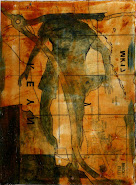

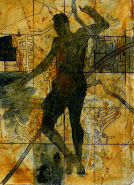

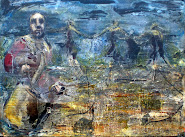

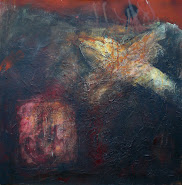

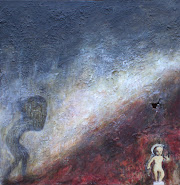

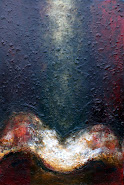

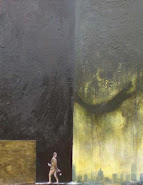



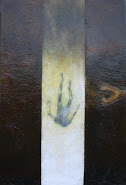





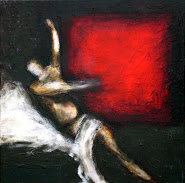


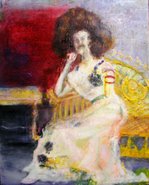
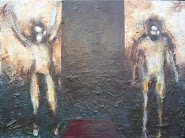


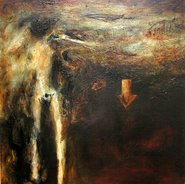
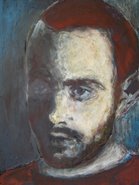
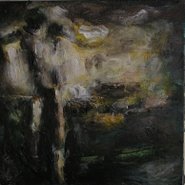
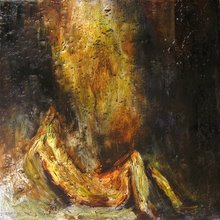
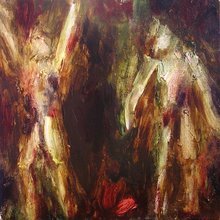
No comments:
Post a Comment